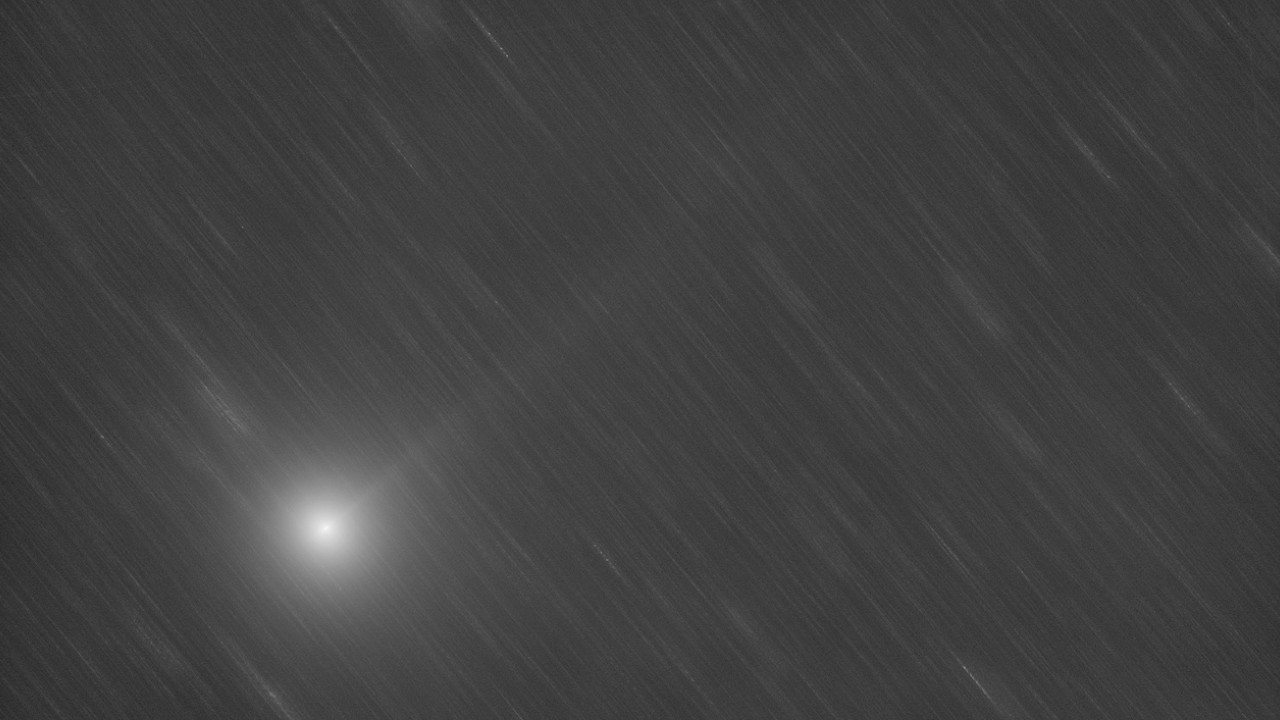A newly discovered comet will shine bright in the Hercules constellation tonight. Here's how to see it
The comet discovered earlier this year will brighten the sky over Earth and may even be visible with the naked eye.

A relatively newly discovered comet is set to reach its brightest point over Earth during its 2023 appearance tonight.
The brightening of comet C/2023 H2 (Lemmon) will happen on Friday (Nov. 10) because this is when the icy traveler is set to reach its closest point to Earth — its perigee. At this time, it will be 17.6 million miles (28.3 million km) from our planet, which is about a fifth of the distance between Earth and the sun. Around the same time, comet C/2023 H2 (Lemmon) will be around 85 million miles (137 million km) from the sun.
According to In the Sky from New York City, comet C/2023 H2 (Lemmon) will become visible at around 5:49 p.m. EST (2249 GMT). At this time, the comet will be 50 degrees over the horizon to the west as the sky darkens (the width of your fist at arm's length equals about ten degrees). After this, comet C/2023 H2 (Lemmon) will remain visible until around 10:29 p.m. EST (0339 GMT on Nov. 11), when it sinks to the horizon.
Related: Comet Nishimura photobombs NASA probe after close sun encounter

Want to see comets in the night sky? We recommend the Celestron Astro Fi 102 as the top pick in our best beginner's telescope guide.
During its Friday afternoon appearance in the sky, the comet will be in the Hercules constellation shining at a magnitude of 5.5, fairly faint but possibly visible to the naked eye under the right conditions. It will certainly be visible through binoculars, and most telescopes should be able to make it out as a fuzzy point of light.
Comet C/2023 H2 (Lemmon) was first spotted on April 23, 2023, by the 1.5-meter reflector telescope of the Mount Lemmon Survey conducted from an observatory outside Tucson, Arizona, which is part of the wider Catalina Sky Survey. The comet is just one of an incredible 50,000 asteroids and comets discovered by the Mount Lemmon Survey, making it one of the most prolific minor planet-discovering surveys currently operating.
This has been a good period to observe comet C/2023 H2 (Lemmon). On Oct. 28, it reached perihelion, its closest point to the sun, coming to around 83 million miles from our star.
Breaking space news, the latest updates on rocket launches, skywatching events and more!
On Oct. 31, the comet was visible edge-on from Earth with a stream of material observable project from the front of the comet C/2023 H2 (Lemmon). This was caused by radiation from the sun causing solid icy material to turn straight to gas — a process called sublimation — which is also responsible for giving comets their distinctive tails.
#スマホ天文部#コメント嬉しい日没後の空を移動中☄️スマホカメラ+望遠鏡で捉えたレモン彗星 C/2023 H2(Lemmon)です速く動いているのが確認できましたので今日は動画です!8分弱の撮影時間なのにこんなに動いているのですね⸜(*ˊᗜˋ*)⸝✨✨#彗星#SkyWatcher P130 と #ASUS#Zenfone8… pic.twitter.com/7b8tHAuwWeNovember 8, 2023
The first half of Nov. will continue this trend, allowing skywatchers to continue to see comet C/2023 H2 (Lemmon), which will continue to be visible from New York City until around Nov. 19. At around this time, the comet's 3,870-year orbit around the sun will begin to carry it away from the inner solar system.
If you are hoping to catch a look at the comet C/2023 H2 (Lemmon), our guides to the best telescopes and best binoculars are a great place to start.
And if you're looking to snap photos of comet C/2023 H2 (Lemmon) or the night sky in general, check out our guide on how to photograph comets, as well as our best cameras for astrophotography and best lenses for astrophotography.
Editor's Note: If you snap an image of comet C/2023 H2 (Lemmon) and would like to share it with Space.com’s readers, send your photo(s), comments, and your name and location to spacephotos@space.com.

Robert Lea is a science journalist in the U.K. whose articles have been published in Physics World, New Scientist, Astronomy Magazine, All About Space, Newsweek and ZME Science. He also writes about science communication for Elsevier and the European Journal of Physics. Rob holds a bachelor of science degree in physics and astronomy from the U.K.’s Open University. Follow him on Twitter @sciencef1rst.
